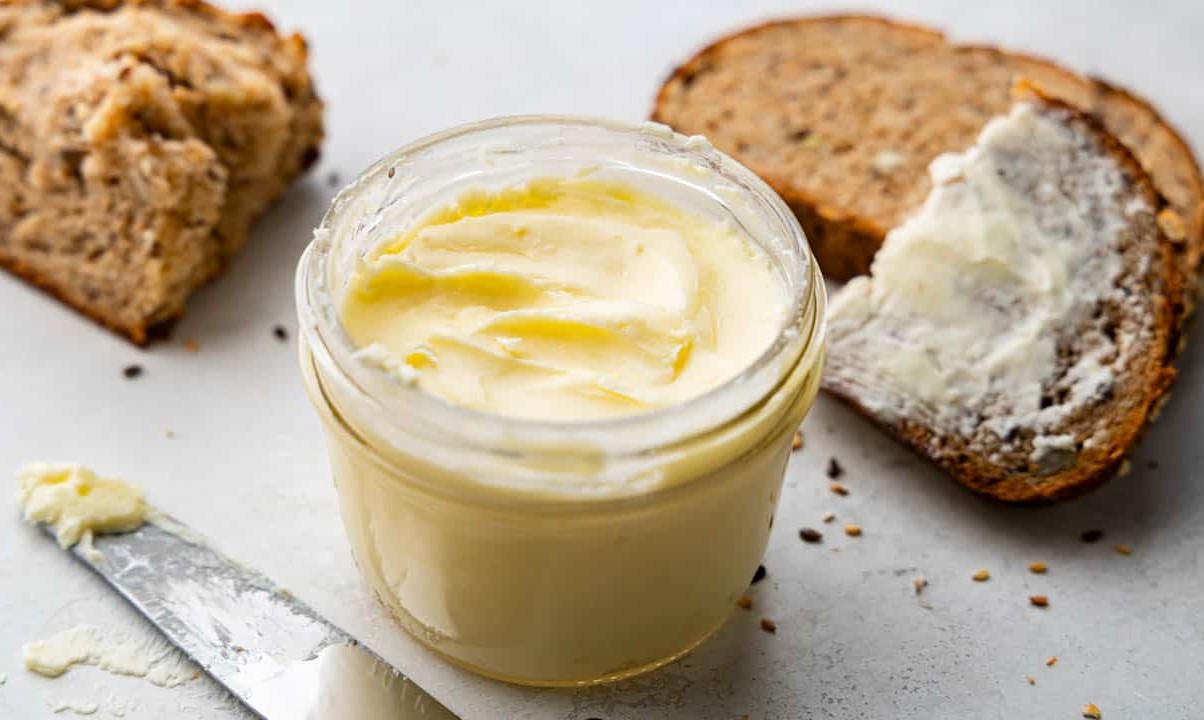Creating your own butter at home is a rewarding and simple process. With just a few ingredients, you can enjoy fresh, creamy butter that's perfect for spreading on bread, cooking, or baking. This recipe allows you to control the salt content and ensures that you know exactly what goes into your butter.
The main ingredient for this recipe is heavy cream. While it is commonly found in most supermarkets, it's important to choose a high-quality cream for the best results. If you prefer salted butter, you will also need salt, which is optional and can be adjusted to taste.

Ingredients for Butter Recipe
Heavy cream: The base for making butter, providing the fat content needed to separate into butter and buttermilk.
Salt: An optional ingredient to enhance the flavor of the butter. Use as per your taste preference.
Technique Tip for This Recipe
When whipping the heavy cream, start at a low speed to avoid splattering, then gradually increase the speed as the cream thickens. This helps achieve a more consistent texture and prevents over-whipping.
Suggested Side Dishes
Alternative Ingredients
heavy cream - Substitute with coconut cream: Coconut cream provides a similar rich and creamy texture, making it a good dairy-free alternative.
heavy cream - Substitute with whole milk and butter: Combine ¾ cup whole milk with ¼ cup melted butter to mimic the fat content of heavy cream.
heavy cream - Substitute with Greek yogurt and milk: Mix equal parts Greek yogurt and milk to achieve a creamy consistency with added protein.
salt - Substitute with sea salt: Sea salt can be used in the same quantity and provides a slightly different mineral flavor.
salt - Substitute with kosher salt: Kosher salt has larger grains and can be used in the same amount for a similar salty taste.
Other Alternative Recipes Similar to This
How to Store or Freeze This Dish
- Store your freshly made butter in an airtight container to maintain its freshness. Glass containers with tight-fitting lids work best.
- Keep the butter in the refrigerator if you plan to use it within a week. This will ensure it remains firm and flavorful.
- For longer storage, consider freezing the butter. Wrap it tightly in plastic wrap or aluminum foil, then place it in a freezer-safe bag or container.
- Label the container with the date to keep track of its freshness. Butter can be frozen for up to six months without losing its quality.
- When ready to use frozen butter, transfer it to the refrigerator to thaw slowly. This helps maintain its texture and flavor.
- If you prefer, you can portion the butter into smaller amounts before freezing. This way, you can thaw only what you need, reducing waste.
- For added flavor, consider mixing in herbs or spices before storing. This creates a delicious compound butter that can elevate your dishes.
- Always use clean utensils when scooping out butter to avoid contamination and extend its shelf life.
- If you notice any off smells or discoloration, it's best to discard the butter to ensure food safety.
How to Reheat Leftovers
Use a microwave-safe dish to reheat the butter in the microwave. Set it to a low power setting and heat in short intervals of 10-15 seconds, stirring in between to ensure even melting.
Place the butter in a small saucepan over low heat on the stovetop. Stir continuously to prevent burning and ensure it melts evenly.
If you have a double boiler, use it to gently reheat the butter. This method helps maintain a consistent temperature and prevents the butter from separating.
For a more controlled approach, use a sous-vide machine. Place the butter in a vacuum-sealed bag and submerge it in a water bath set to a low temperature, around 90-95°F (32-35°C), until it reaches the desired consistency.
If you need to reheat a larger quantity, preheat your oven to 200°F (93°C). Place the butter in an oven-safe dish and cover it with aluminum foil. Heat for about 5-10 minutes, checking frequently to avoid over-melting.
Best Tools for This Recipe
Mixer: A stand mixer or hand mixer will be used to whip the heavy cream until it separates into butter and buttermilk.
Mixing bowl: A large bowl to hold the heavy cream while it is being whipped.
Strainer: Used to drain the buttermilk from the butter.
Spatula: Useful for scraping down the sides of the bowl and for mixing in the salt.
Cold water: Needed to rinse the butter after draining the buttermilk.
Measuring cups: To measure the 2 cups of heavy cream accurately.
Measuring spoons: To measure the ¼ teaspoon of optional salt.
How to Save Time on This Recipe
Use a food processor: Speed up the process by using a food processor to whip the heavy cream instead of a mixer.
Chill the cream: Ensure the heavy cream is well-chilled before starting; it will whip faster and more efficiently.
Pre-measure ingredients: Have your heavy cream and salt pre-measured to streamline the process.
Use cold water: Rinse the butter with very cold water to solidify it quickly, making it easier to handle.
Batch processing: If making large quantities, process in batches to avoid overloading your equipment and ensure even whipping.

Butter Recipe
Ingredients
Main Ingredients
- 2 cups Heavy cream
- ¼ teaspoon Salt optional
Instructions
- Pour heavy cream into the mixer.
- Whip the cream until it separates into butter and buttermilk.
- Drain the buttermilk and rinse the butter with cold water.
- Add salt if desired and mix well.
Nutritional Value
Keywords
More Amazing Recipes to Try 🙂
- Birria Quesa Tacos Recipe3 Hours 30 Minutes
- Peruvian Chicha Morada Drink Recipe55 Minutes
- Linguine with Clam Sauce Recipe35 Minutes
- Sausage Stuffed Jalapenos Recipe35 Minutes
- Cowboy Caviar Recipe15 Minutes
- Ground Beef and Potatoes Recipe40 Minutes
- Turkey Avocado Panini Recipe15 Minutes
- Chicken Wing Dip Recipe30 Minutes

Leave a Reply